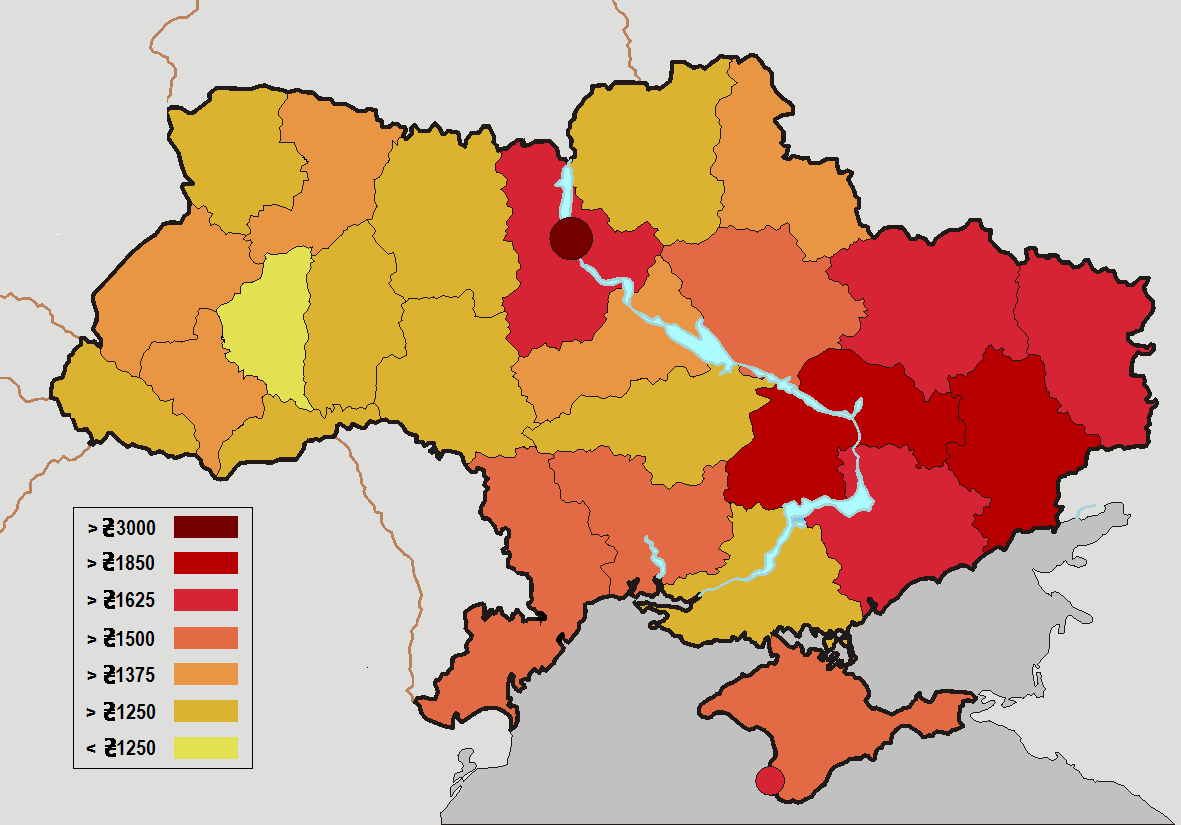I recently finished reading Borderland: A Journey through the History of Ukraine by Anna Reid. The book in 233 pages of text provides a brief history of Ukraine as well as accounts of experiences the author had reporting for two years (in the early 1990s) while living there. The book is organized by the places she visited as a reporter for the Daily Telegraph, and the interviews she conducted; historical sections are introduced sequentially in the chapters.
I also read the Ukraine sections of the CIA World Factbook and the Wikipedia entry for Ukraine.
Ukraine has existed as a country only since 1991. Immediately before that it was one of the republics of the Union of Soviet Socialist Republics. It looks to me as if Ukrainians have created a story of their past from the Kievan Rus, through eastern Slavs, Cossacks, and others who lived in the region. The country now consists of areas once dominated by Lithuania, Poland, Austria, the Crimean Khanate, Romania, Czechoslovakia, and of course, Russia, and different parts have different cultures and different views of the "nation" based on their local histories. Most of Ukraine was a part of the Russian empire for hundreds of years before the country became part of the USSR.
Historical Regions of the Ukraine
 |
| Source |
In the first decade after independence, the Ukrainian economy contracted by 60 percent, and it has still not fully recovered. The death rate has exceeded the birth rate during more than two decades of independence; there has been substantial migration, but the population has decreased overall since 1991. The country has been described as a kleptocracy, with government plagued by corruption, and a small number of oligarchs gaining great wealth. Massive popular demonstrations -- the Orange Revolution of 2004 and Euromaidan in 2013-14 -- attested to massive popular disapproval of government and economic conditions and each led to regime change.
It was the current dangerous situation that caused my history book club to choose to read about Ukrainian history, and the recommendation of a former U.S. Ambassador to Ukraine that led me to choose this book. The book in describing the disasters of the last century is sometimes hard to take, but is a worthwhile read. The author manages to combine an overview of Ukrainian history with a feel for the human impact, the latter based on her accounts of interviews with people who shared memories of the hard times.
It is well known that there is a divide in the country, with the western population more oriented toward western Europe, more likely to speak Ukrainian, more likely to belong to the Ukrainian oriented churches, while the east and south, (and especially Crimea) were more oriented toward Russia, more likely to speak Russian, and more more likely to belong to the Russian Orthodox church. The regions bordering on Russia appear to have had more industry and more mining. The following map illustrates an aspect of this regionalism:
Ukrainian Salary Map (2007)
 |
| Source |

1 comment:
The following is drawn from Wikipedia's entry for the CIS:
While Ukraine was one of the three founding members of the Confederation of Independent States (created in the breakup of the USSR) it never ratified the CIS charter and its parliament voted to withdraw from the CIS on March 14, 2014. It ratified the CIS Free Trade Agreement but has not joined the Eurasian Economic Community. It is not a member of the Collective Security Treaty Organization which includes Russia, but is a member of a more pro-Western pro-US group known as the "GUAM" (Georgia, Uzbekistan / Ukraine, Azerbaijan, Moldova).
Post a Comment